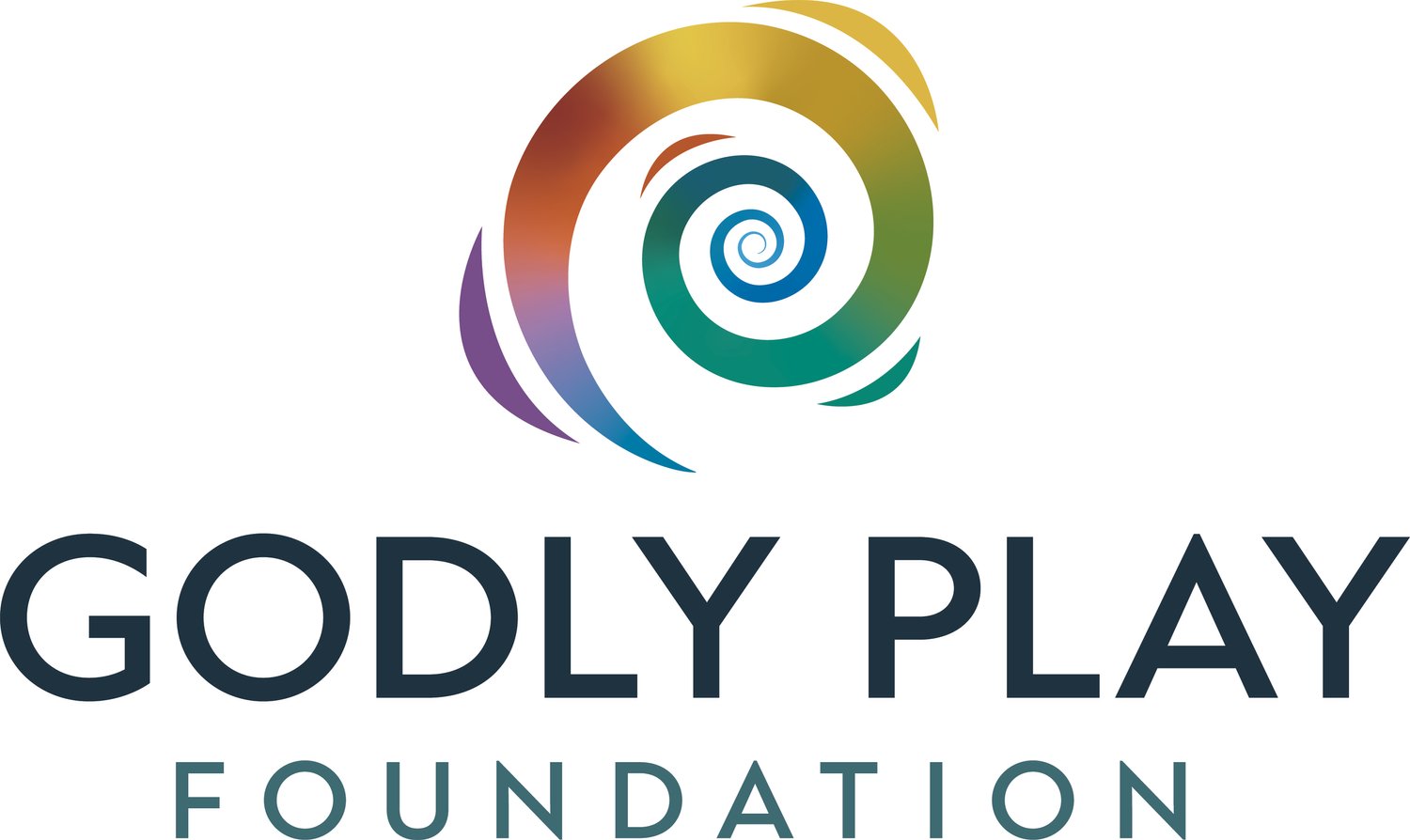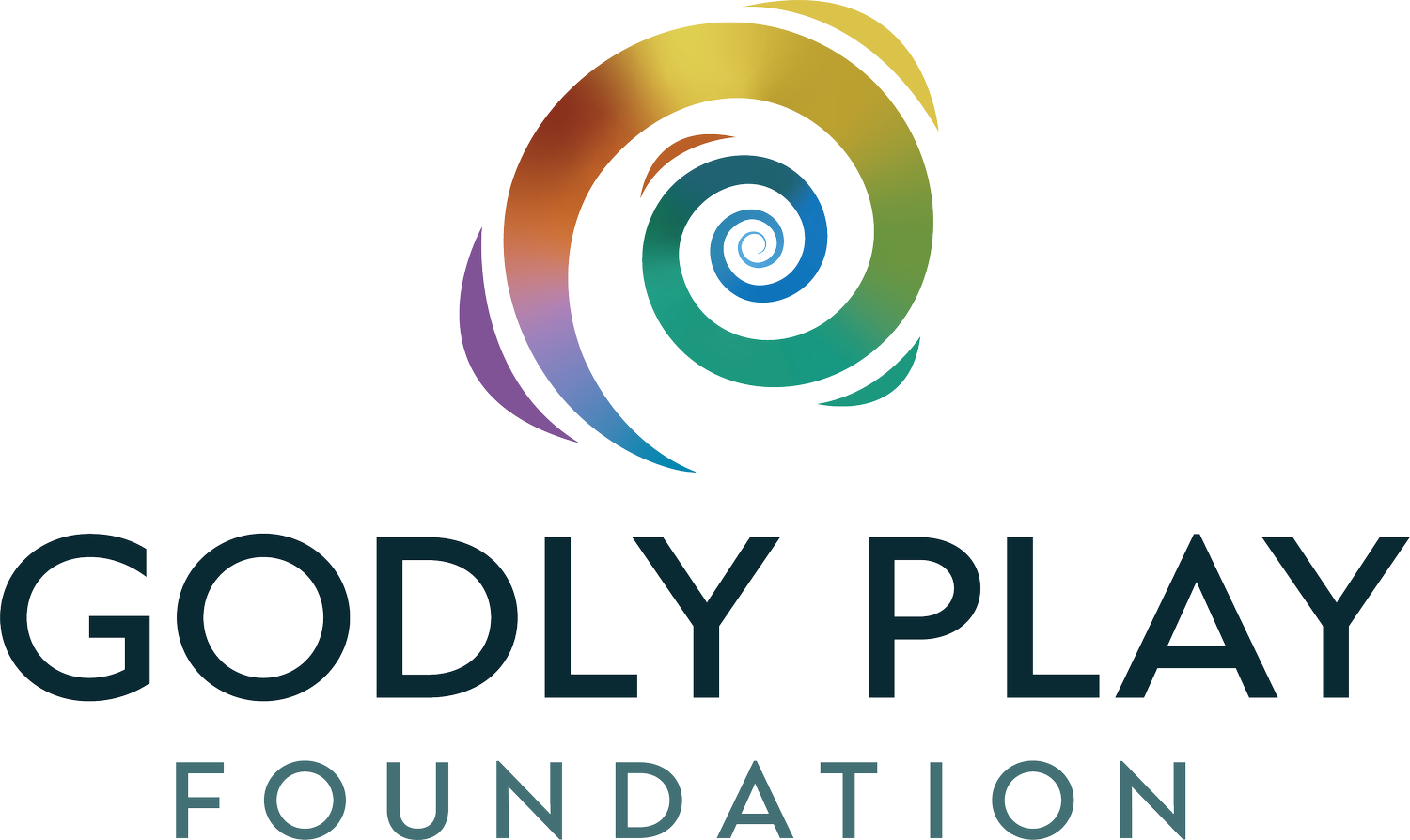Advent III: An Equation For Joy
This post is adapted from Bird’s Substack newsletter Wiggles & Wonder, found here. Bird is a Godly Play Trainer who has been teaching Godly Play in congregations along the East Coast for seven years. A recent transplant from Western Massachusetts, she lives with her wife and cats in Brighton, Mass.
A vintage photo of the interior of Bird’s childhood parish, Zion Lutheran Church, Staten Island, at Christmas
Can you feel it? Day by day, we are moving towards Joy.
Growing up, I remember the Advent themes of Hope, Love, Joy, and Peace. Our church’s Advent wreath hung from the high, Viking ship-inspired ceiling, which meant it often took a teen or adult to reach it when the time came to light the candles. And each year when I was young, as one of the small cohort of “early church” attendees, my mother and I were often elected to participate. I would read one of the blessings inspired by the week’s theme and she would light the candle.
Text and language are things I can remember. I began lectoring, after all, by the time I was about 9 years old and I was infamous in our Sunday School program for my lengthy memory verses, which often spanned the entirety of the day’s Gospel reading. But images – well, as I sat and thought about all those years of Advent wreath lighting, I had to text my mother to ask if there had been a pink candle on that wreath or if they had all been purple. With no visual memory to call upon, I would believe her either way.
Yes, she told me, there had always been one pink candle and three purple ones in that building where first my mother and then myself grew up, standing in a line with my grandmother in our pew. And the pink one (rose, I know) stands for Joy – but what does Joy feel like?
As a teenager, I worked with a mental health professional who used to ask me the same question regularly. Pausing in the still air of my perpetually dismal mood, he would ask, “But do you experience joy?” It was the most absurd question I could imagine at the time. No, I did not experience joy. Do people actually experience joy? I wasn’t sure I believed it.
Giant handmade Godly Play Advent cards made by Bird at St. John the Evangelist, Hingham
Joy, the way we talk about it in popular culture, is so unsullied, so simple and bubbly it can be hard to believe. It is, at least to me, saccharine. But Godly Play offers us a different approach to Joy.
When we talk about Joy in Godly Play, we sometimes encounter a unique equation: that joy is where great happiness and great sadness meet. We experience joy at Easter, for example, when we face the sadness of Jesus’ death on the cross with the extraordinary happiness and mystery of his resurrection. And at Advent, when we come to the third Sunday, we dip out of a season of serious preparation and contemplation, of readying ourselves for the King who is coming, in order to experience just a bit of the celebration that is to come. The two blend and emerge, marked by the rose-colored candle on Gaudete Sunday. It is the joy of which the Mother Mary sings upon learning from the angel Gabriel that she has been chosen to be the mother of God. “My soul magnifies the Lord…”
When I was still living a life that included no notion of Joy, and even now, in my much happier life, it seems clear to me that the thing that makes Joy feel real is the way it is tempered by sorrow, by sadness and mystery and the undeniable complexity of our lives. We experience things in spectrums and dichotomies. As an autistic person who can struggle to know what I’m feeling, sometimes what I’m not feeling is really the starting point.
A take on the emotions wheel by Abby Vanmuijen
When I look at this particular emotion wheel, which is a bit different from the standard one, it’s surprising to find Joy as one of the core emotions, one that can be split into shades of connectedness, freedom, love, safety, silliness, and other ways of being. I am perplexed, and then I think of children and their joys. and I begin to see and understand what this arrangement means. And I think about Mary.
When Mary was chosen to be the Mother of God and sang out in Joy, what made up that feeling?
Did she feel seen by God, who chose to honor her in this way?
Did she feel connected because she was part of this bigger story?
Did she feel a special intimacy, both with God and with the infant in her womb?
And, importantly, amidst all of these shades of being, we can remember that before we hear of Mary’s Joy, we hear of her Fear. Gabriel tells her she needn’t be afraid, but still – that doesn’t mean she isn’t still experiencing that Fear – the worry and vulnerability and overwhelm of this moment. Joy does not stand alone. Instead, at the crossroads where great sadness, the seriousness of this season of preparation, and the anxious excitement of Christ’s imminent coming meet, we stand and we wait.




